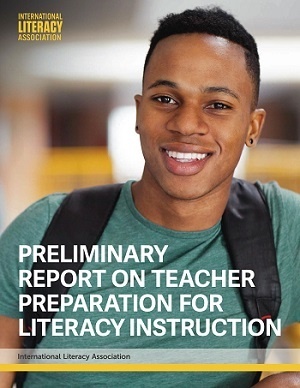What Are Prospective Teachers Being Taught About Literacy?

The answer: Sadly, not enough!
The International Literacy Association recently released a new research brief about teacher preparation for literacy instruction based on states’ requirements. It is part of a larger effort by ILA to examine overall teacher preparation for literacy instruction.
Unfortunately, but not surprisingly, the ILA found that there is inconsistent and insufficient state requirements for ensuring that teachers have the training and knowledge to provide literacy instruction. This, despite the requirements of Common Core standards that teachers of all subjects and grades embed literacy instruction throughout the school day.
Stephen Sawchuk writing for Education Week summarized the findings this way:
- In the elementary field, 23 states had professional teaching standards, but they didn’t always mention literacy. More to the point, 34 states had no specific reading standards for elementary teachers.
- As for coursework, 18 states specified the number of hours of literacy or reading courses, ranging from 3 to 15 hours. Twenty-four states had no literacy or reading course requirements.
- States had varied student-teaching requirements but did not explicitly require student-teaching to provide experiences in learning how to teach literacy.
- Fourteen states required a test in reading instruction; other states had a generalized assessment covering all areas of elementary education.
These findings are even more disturbing when coupled with the conclusions in the 2006 report issued by the National Council on Teacher Quality “What Education Schools Aren’t Teaching About Reading and What Elementary Teachers Aren’t Learning.”
For this, report researchers reviewed the literacy coursework of a large, representative sample of college teacher education programs to determine what aspiring elementary teachers are learning about reading instruction as undergrads. After examining the course syllabi and texts of required reading courses, they concluded the following:
- Most education schools are not teaching the science of reading, i.e., exposure to all five components of reading instruction (phonemic awareness, phonics, fluency, vocabulary, comprehension).
- Even courses claiming to provide a “balanced” approach ignore the science of reading.
- Characteristics such as national accreditation do not increase the likelihood that an education school is more likely than others to teach the science of reading.
- Much of current reading instruction is incompatible with the science.
- Teacher educators portray the science of reading instruction as one approach that is no more valid than others.
- Many courses reflect low expectations, with little evidence of college-level work.
- The quality of almost all reading textbooks is poor. Their content includes little to no hard science, and in far too many cases they are inaccurate and misleading.
- There is no agreement in the field about what constitutes “seminal” texts.
Click here for a related policy brief.
My work training teachers across the country unfortunately confirms these findings. While it is important for elementary students to learn science and other content information, most educators would agree that the most important thing students must learn in these grades is how to read and write. Yet the majority of teachers enter the profession not knowing enough about how to do this effectively.
It’s even worse when you get to middle and high school grades. In the last ten years, it has been heartening to meet a growing number of secondary teachers who accept that they must play an important role in growing literacy skills as students move through upper grades. But it is very disheartening to hear from so many of them that they do not have a clue about how to do this; they were never taught how during their undergraduate or graduate teacher preparation.
What Should Teachers Know About Teaching Literacy?
There are several resources that can help answer this question:
- Standards for Reading Professionals (2010) International Literacy Association
- Knowledge and Practice Standards for Teachers of Reading (2010) (International Dyslexia Association)
- Teaching Reading IS Rocket Science (1999) (American Federation of Teachers) NOTE: this is an old report, but still very insightful.
- Knowledge to Support the Teaching of Reading: Preparing Teachers for a Changing World (2005). Snow, Griffin, Burns, Eds., Jossey-Bass
Finally, here are textbooks that I highly recommend for use in undergraduate and graduate literacy courses:
Multisensory Teaching of Basic Language Skills (3rd ed, 2011) Judith Birsh, Ed. Paul H. Brookes Publishing
Fundamentals of Literacy Instruction and Assessment: Pre-K-6 (2012) Martha Hougen & Susan Smartt, Eds, Paul H. Brookes Publishing
Fundamentals of Literacy Instruction and Assessment: 6-12 (2015), Martha Hougen, Ed., Paul H. Brookes Publishing

 Joan Sedita is the founder of Keys to Literacy and author of the Keys to Literacy professional development programs. She is an experienced educator, nationally recognized speaker and teacher trainer. She has worked for over 35 years in the literacy education field and has presented to thousands of teachers and related professionals at schools, colleges, clinics, and professional conferences.
Joan Sedita is the founder of Keys to Literacy and author of the Keys to Literacy professional development programs. She is an experienced educator, nationally recognized speaker and teacher trainer. She has worked for over 35 years in the literacy education field and has presented to thousands of teachers and related professionals at schools, colleges, clinics, and professional conferences.
Leave a Reply